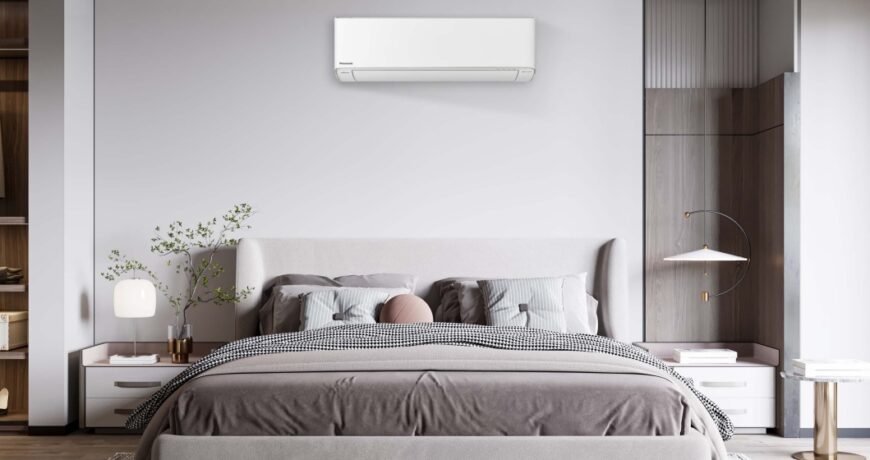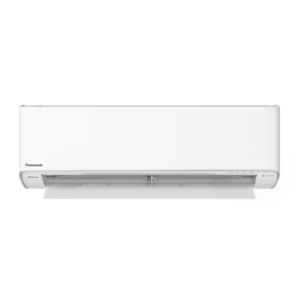Panasonic’s New Range of Air Conditioners: Redefining Climate Control in Homes
Panasonic has recently unveiled its latest range of air conditioners, catering to the ever-evolving demands of comfort and energy efficiency. This new line-up is designed to offer a superior cooling experience while boasting advancements in energy conservation. Their sleek designs and cutting-edge technology position them as a compelling choice for both residential and commercial settings.
The air conditioners are equipped with Panasonic’s unique Nanoe-X technology, which is engineered to improve air quality while delivering optimal cooling performance. This feature highlights the brand’s commitment to combining functionality with well-being, aiming to create living spaces that are not only comfortable but also healthier.
Energy efficiency is another cornerstone of the range, with models featuring the Inverter system, which intelligently adjusts power usage to reduce energy waste. This reflects Panasonic’s dedication to sustainability and its response to the increasing consumer demand for eco-friendly appliances. With these innovations, Panasonic is set on reinforcing its position in the market as a provider of advanced climate control solutions.
Top Features of Panasonic Air Conditioners
Panasonic’s latest range of air conditioners boasts advanced technology and innovative features designed to deliver superior comfort and efficiency.
Inverter Technology
Panasonic air conditioners with Inverter Technology offer precise temperature control and significant energy savings. Unlike traditional air conditioners, these models adjust the compressor speed to maintain a consistent temperature, resulting in:
- Less energy consumption
- Quieter operation
ECONAVI Sensors
Equipped with ECONAVI Sensors, Panasonic air conditioners optimize performance by detecting human activity and sunlight levels. These sensors contribute to:
- Adjusting cooling power based on room occupancy
- Enhancing energy savings without sacrificing comfort
- Nanoe-G Purification
Panasonic’s Nanoe-G Purification system uses nano-technology fine particles to clean the air. It includes:
- The removal of 99% of airborne particles
- Deodorisation, contributing to a fresher indoor environment
Evaluating Your Space
When selecting a Panasonic air conditioner, it’s crucial to accurately assess the space it will serve. Proper evaluation ensures optimal efficiency and performance.
Measuring Your Area
The first step in choosing the right air conditioner is to measure the room size. Here’s how to do it:
- Length and Width: Measure the length and width of the room. Multiply these figures to calculate the area in square metres (m²).
- Ceiling Height: Standard ceiling height is typically 2.4meters , but measure if uncertain. Higher ceilings require more cooling capacity.
Considering Room Layout
Room layout impacts air conditioner selection in several ways:
- Exposure to Sunlight: Rooms with significant sunlight exposure will require a more powerful unit.
- Windows and Doors: The number and size of windows and doors affect how heat enters and exits the room.
- Insulation: Good insulation reduces cooling requirements; poorly insulated spaces might need a larger unit.
- Occupancy: More people means more heat, increasing cooling needs.
By addressing these factors, consumers can choose a Panasonic air conditioner that aligns with their specific room requirements.
Installation Process
The installation process for Panasonic’s new range of air conditioners can impact performance and warranty. It is essential to understand the differences between professional and do-it-yourself (DIY) installation options, as well as the steps needed to prepare before installation begins.
Professional vs DIY Installation
The decision between professional installation and DIY installation is determined by the buyer’s skill level and the complexity of the installation. Panasonic recommends that a licensed HVAC professional handle the installation to ensure optimal functionality and to uphold the product warranty. Professionals have the requisite tools and expertise to perform a full assessment and complete the installation according to Australian Standards.
Professional Installation Advantages:
- Ensures warranty remains valid
- Expert assessment of the site
- Compliance with safety regulations
- Access to specialised tools
DIY Installation Considerations:
- Some technical know-how required
- Risks voiding the warranty
- Personal safety risks
- Possible lack of proper tools
Preparing for Installation
Before the installation of a Panasonic air conditioner, certain preparations must be taken to ensure a smooth process.
- Selecting an Appropriate Location:
- Inside: The indoor unit should have good air circulation, be away from direct sunlight, and be accessible for maintenance.
- Outside: The outdoor unit must be on level ground, with sufficient clearance from walls for airflow and maintenance access.
- Electrical Requirements:
- Check that the electrical supply is consistent with the unit’s requirements.
- Consider a dedicated circuit breaker for the air conditioner.
- Site Assessment:
- Clear the area of any furniture or obstructions.
- Ensure structural integrity for wall-mounted units.
- Plan for drainage away from the building structure.
Maintaining Your Air Conditioner
Proper maintenance is crucial for ensuring the longevity and efficiency of Panasonic’s new range of air conditioners. By adhering to a regular cleaning regime and following a servicing schedule, you can optimize the performance and energy consumption of your unit.
Regular Cleaning
Daily use can cause a build-up of dust and other airborne particles in an air conditioner.
Filters:
- They should be cleaned every two weeks.
- A gentle vacuum or wash with warm, soapy water suffices.
Outdoor Units:
- Monthly inspections for debris.
- Keeping the surrounding area clear to maintain airflow.
Servicing Schedule
Scheduled servicing by a qualified technician ensures internal components operate correctly.
Frequency:
- Annual check-ups are recommended.
- In high-use environments, six-month intervals might be necessary.
Technician Tasks:
- Inspection of refrigerant levels.
- Testing of electrical components.
- Cleaning of internal parts not accessible to the user.
Energy Saving Tips
Maximizing energy efficiency with Panasonic’s new range of air conditioners is straightforward when you adjust the settings appropriately and take advantage of built-in features. These tips help reduce power consumption while maintaining comfort.
Optimal Temperature Settings
Setting the thermostat to the recommended 24–26°C during warmer months is crucial to save energy while keeping the space comfortable. Each degree set outside this range can increase energy usage by approximately 5-10%.
Utilizing the timer function to switch the air conditioner on or off aligns with occupancy patterns, hence avoiding unnecessary operation. For instance, programming the air conditioner to turn off an hour before leaving the house or to start before arriving can significantly reduce energy usage.
Pre-cooling/Warming: Start the air conditioner shortly before arrival to pre-cool or pre-warm your space.
Night Time: Set the timer to turn off after falling asleep to avoid running the air conditioner all night.
Using these strategies, consumers can enjoy a comfortable environment while being energy-conscious with Panasonic’s new air conditioners.
Why Choose Panasonic
Panasonic air conditioners offer a blend of technological innovation and reliable performance, ensuring consumers receive top-quality climate control in their homes and offices.
Consumers highly regard Panasonic’s air conditioning units for their durability and energy efficiency. The Panasonic CS/CU-XU9AKQ 1.0 HP Split-type Airconditioner exemplifies the company’s commitment to providing superior cooling performance. This model has garnered positive reviews for its advanced features, tailored for optimal comfort and convenience. Reviews often highlight the unit’s quiet operation and user-friendly controls, reinforcing consumer confidence in Panasonic’s product line.


